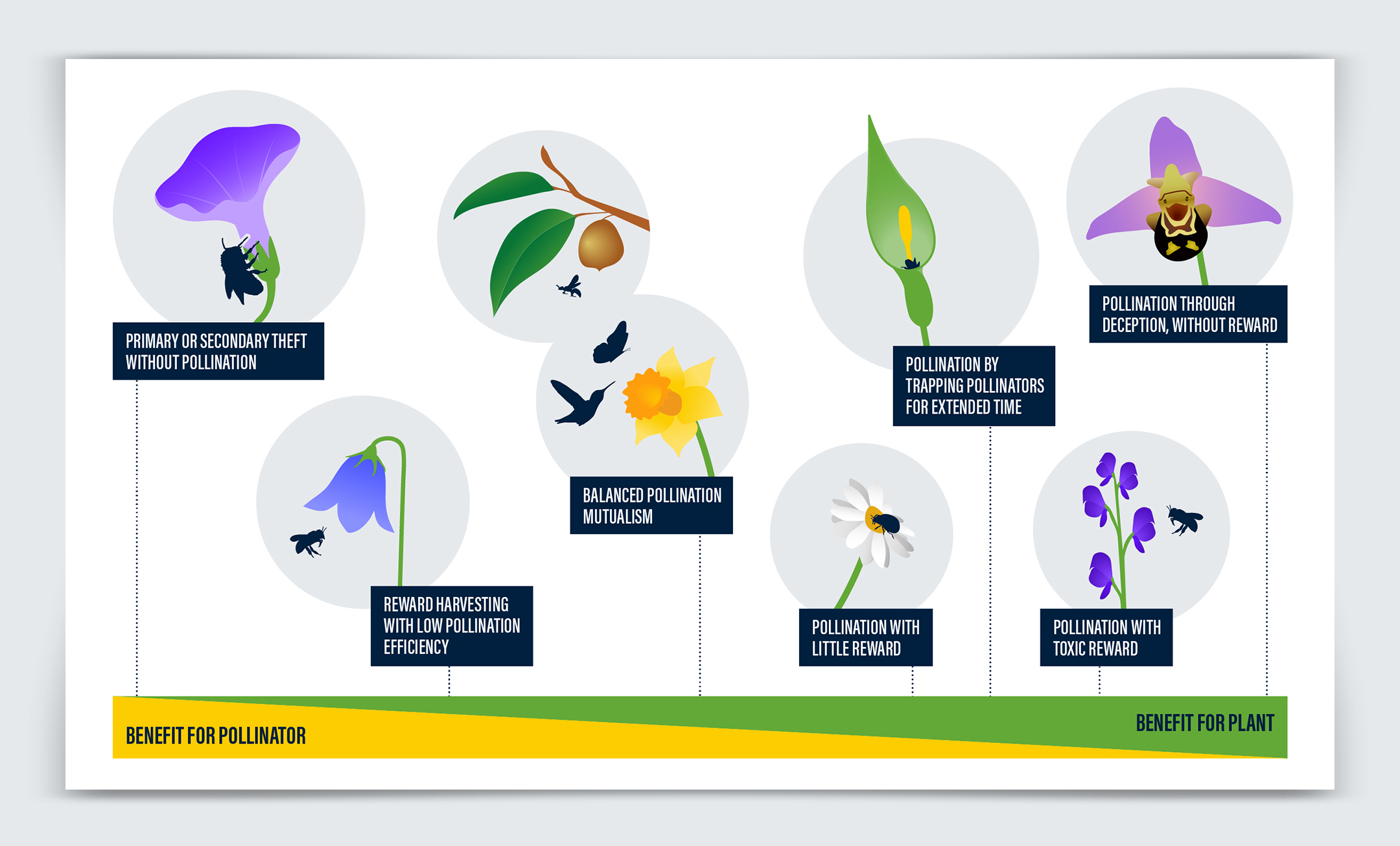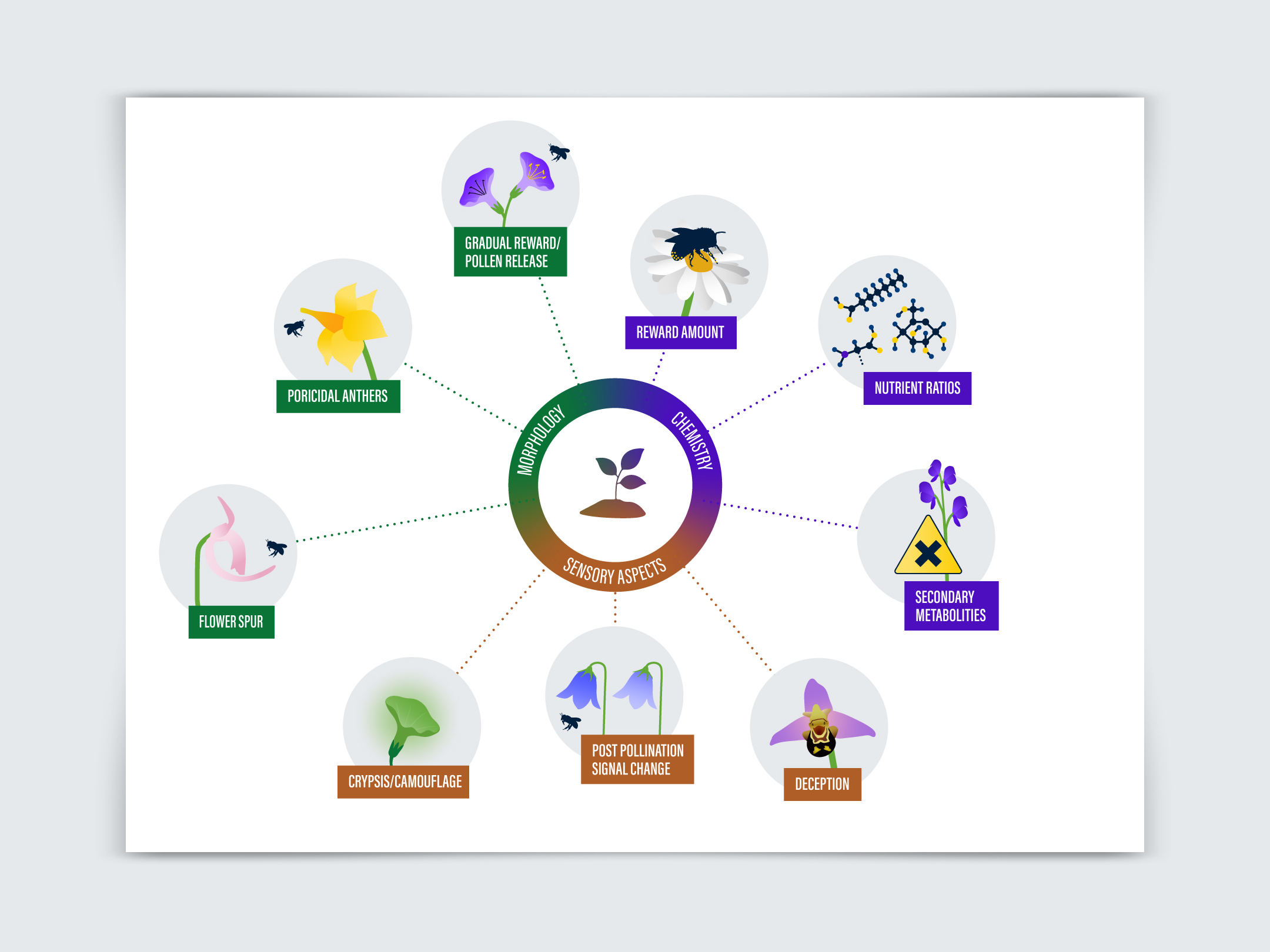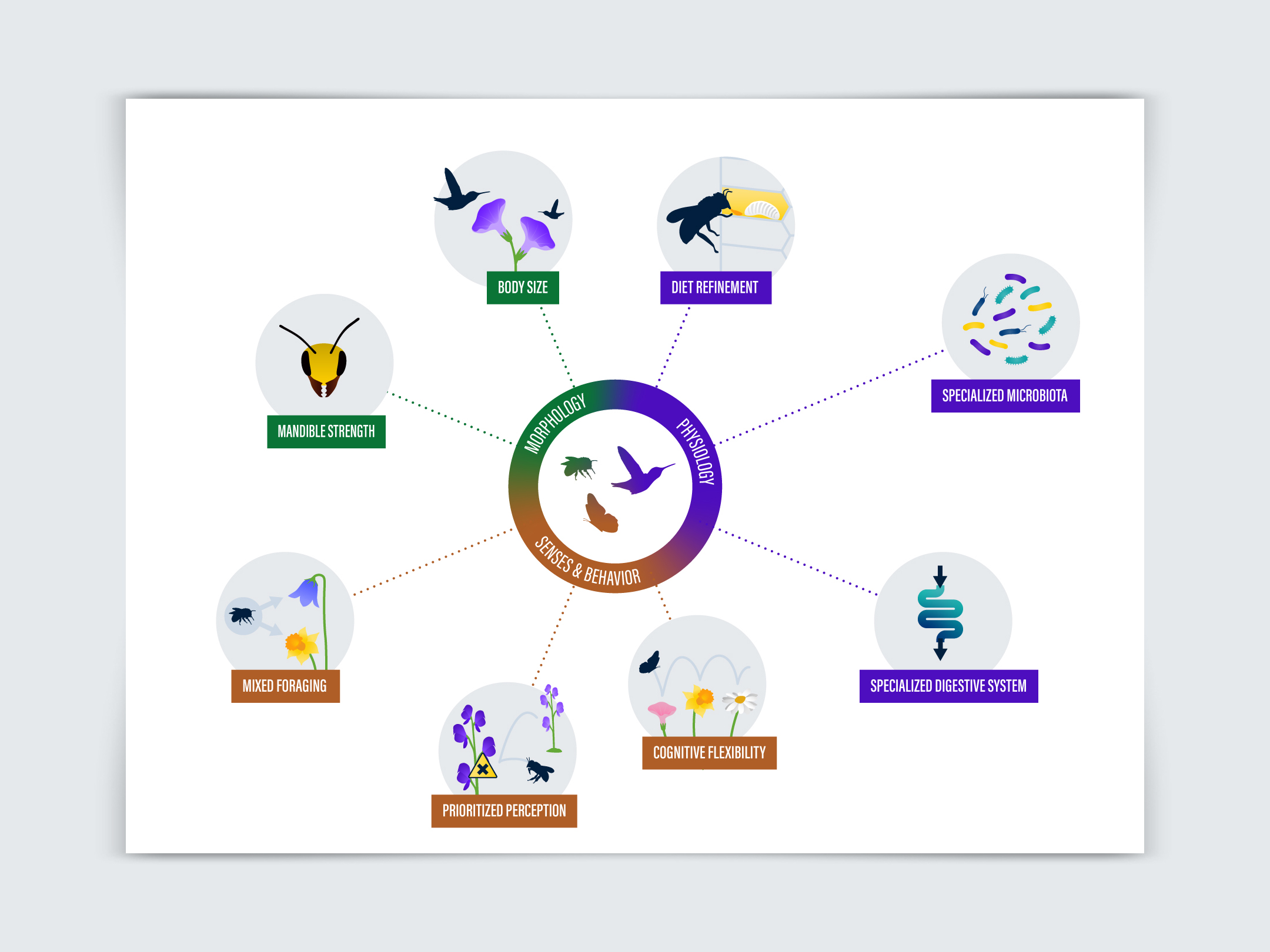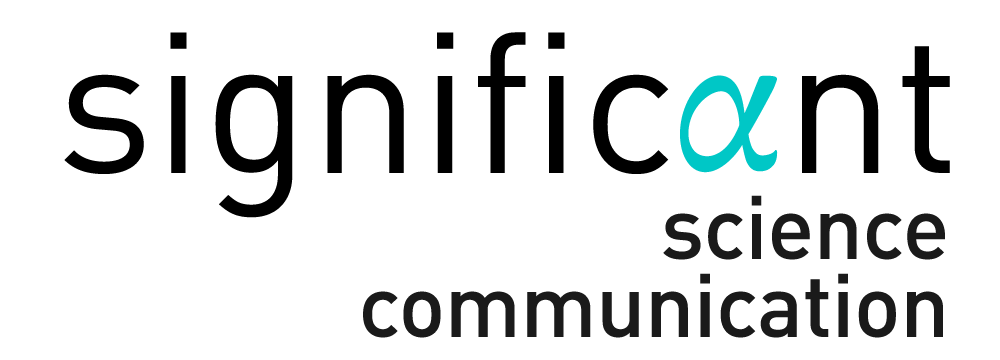Plants & pollinators: graphics for research article
for Groningen University

P ollinators are indispensible for life on earth. As pollinators feast on nectar and pollen in flowers, they also move pollen around from male flowers to female flowers, which results in fertilized flowers (which in turn produce fruits and seeds). Pollination is usually mutually beneficial to plants and pollinators.
But, as this study shows, there is not always a perfect balance in the benefits for plants and pollinators. The image above shows this on a scale: with most benefit for pollinators on the left to most benefit for plants on the right. Bees for example can “steal” nectar by puncturing a flower from the side, hereby avoiding the pollen inside the flower and no pollination. On the other side of the spectrum, the bee orchid deceives bees with flowers that look like bees, but offers no reward for the pollinators.
There are many ways in which pollinators and plants have adapted, that can be divided into morphological, chemical and sensory aspects. The adaptations are shown in the figures below, with plants on the left and pollinators on the right. For example: some flowers change color when they have been pollinated, signaling pollinators that there is nothing left to take there. Nature is truly fascinating!
PROJECT
Graphics for research article from Casper van der Kooi et al, published in Current Biology.
PRODUCTS
3 graphics showing the scale of plant and pollinator benefits – and adaptation strategies.
TOPICS
Plant-pollinator interaction, pollination, ecology, evolution


Significαnt
Visual communication of science & sustainability
CONTACT ME
elzemiek@significantcommunication.eu
+31 627 875 365
Registered as: Significant Communication
KvK no: 68857861
DISCOVER MORE
SOCIAL MEDIA
